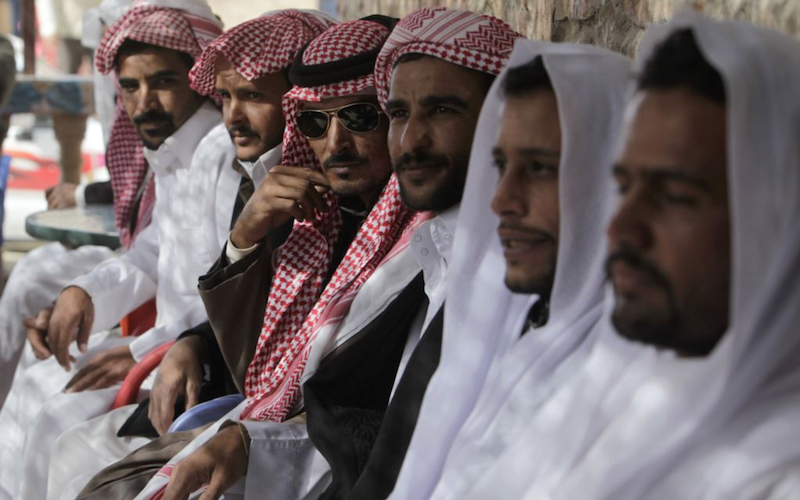
The Troubled History of Egypt’s Sinai Peninsula
When Metrojet flight 9268 was blown out of the sky over the Sinai Peninsula in October last year, the world was alerted to the creeping Islamist insurgency in Egypt’s remote north-eastern corner. During the seven months since the deadly bombing in which 224 people lost their lives, the IS-affiliated militant group which claimed responsibility for the attack – Wilayat Sinai (Sinai Province) – has further enhanced their ambitions and capabilities, prompting greater attention from concerned international observers. The rapid growth of the group, which now has an estimated 1,500 fighters and access to more sophisticated weaponry, signals the latest development in an increasingly worrying regional picture, in which conflicts are spiraling out of control and jihadist ideology is spreading to unstable areas. Whilst Islamic State (IS) have recently lost ground in their strongholds of Syria and Iraq, their affiliate branches in Libya and Egypt continue to grow in strength, with Sinai in particular being targeted as a new base in recent IS propaganda videos – signaling a potential shift in focus towards North Africa.
However, despite recent developments, the presence of militants in the Sinai Peninsula is nothing new. The region has a long and troubled history of instability and jihadist violence, which can be traced back through time to uncover how Wilayat Sinai has been able to establish itself as an emerging IS stronghold, at the crossroads of North Africa and the Middle East.
The current developments must be placed firstly within the Sinai’s geographical context: as a remote desert area, it is far from the control of the central government in Cairo, and has long been characterized by a weak state presence and a climate of lawlessness. Secondly, it must be placed within a firm historical context: as a slice of territory located at the heart of one of the world’s most volatile and unstable regions, which has been fought over for decades.
In 1967, the Sinai Peninsula was captured by Israel during the six-day war, and was held until the Camp David Accords in 1978 led to a peace agreement between Israel and Egypt, facilitating the eventual withdrawal of Israeli forces by 1982. In their place, a peacekeeping force made up of troops from 12 countries became permanently positioned in the area. Known as the ‘Multinational Force and Observers,’ the role of the mission was to monitor the terms of the treaty and ensure that peace prevailed. A period of relative stability followed, during which Egypt’s former strongman president Hosni Mubarak oversaw the region’s transformation throughout the 1980’s and 1990’s, with coastal towns such as Sharm el-Sheikh becoming popular holiday destinations for western travelers, as the tourist industry boomed and revitalized the flagging local economy.
Despite these economic successes along the coast, many of the indigenous Bedouin people of the Sinai felt isolated from the rest of the country: marginalized from the political process, denied access to the region’s natural resources, and excluded from the economic benefits of the thriving tourism industry. Whilst the coastal tourist resorts were made to feel safe for western visitors through the maintenance of a high security presence, the areas of Sinai to the north became increasingly unstable and lawless: smuggling routes flourished as state presence remained weak, with weapons being transported in tunnels under the border from the neighboring Gaza Strip.
In the 1990’s, the area became a breeding ground for terrorists: individuals would travel to the Sinai to receive combat and arms training, before carrying-out attacks in other parts of Egypt. A group which shared the violent ideology of Al-Qaeda – Tawhid wal-Jihad – soon emerged after several factions united under a larger movement, and came to prominence in the early 2000’s. By 2004, the Sinai was no-longer just a training ground, but the site of deadly incidents: the group conducted a suicide attack on the resort town of Taba, killing more than 30 people. The following year, larger-scale attacks followed, when 88 people were killed in a series of car bombings in Sharm el-Sheikh during July 2005. The attacks were unprecedented in scale: they spread fear through the coastal towns and decimated the tourist industry, shattering the livelihoods of many locals and drawing international condemnation.
After the spate of attacks, the government of Hosni Mubarak cracked-down hard. Many of the militant group’s leaders were killed in gun battles with the security forces, whilst many more suspected terrorists were sentenced to jail. For the time being, the insurgency was suppressed and the tourism industry recovered. However, the radical ideology of Tawhid wal-Jihad and Al-Qaeda did not disappear, and the groups served as an inspiration for future jihadism: many former members joined forces to form Ansar Bayat al-Maqdis – a group which would later transform into Sinai Province. The springboard which launched this new wave of terrorism was initiated in 2011: as the Arab Spring revolutions swept across the Middle East at lightening pace, the Sinai Peninsula experienced some of the most severe uprisings. It’s location in the far north-west of Egypt, led to an increasingly lawless scenario as the state did not possess the necessary resources to exercise full control; this fed into an atmosphere of instability and once-again made the Sinai a hotspot for terrorist recruitment.
Over the next five years, Ansar Bayat al-Maqdis became the most active and dangerous insurgent group in Egypt, carrying out regular attacks in northern Sinai, and even some in the capital, Cairo. In November 2014, the militant organization changed its name to Sinai Province and pledged allegiance to IS, stating a desire to be governed as part of a proposed caliphate extending across the Middle East and North Africa. From this point onwards, attacks increased in scale and complexity, signaling closer co-operation with IS leadership and the possession of more advanced weaponry. The Egyptian army has been the primary target of attacks, particularly since the removal of Islamist President Mohammed Morsi and the banning of the Muslim Brotherhood in 2013. In January 2014 the group shot down an Egyptian military helicopter in an audacious attack with a ground-launched missile, likely to have been smuggled from Libya; this came just one month after a large-scale attack on a security compound in the northern town of Dakahliya, in which 15 people were killed and more than 100 injured.
The military-led government of President Abdul Fattah al-Sisi placed the region under a ‘State of Emergency’ in October 2014, after 33 security personnel were killed in an attack claimed by the group. At the border with the Gaza Strip, the authorities effectively created a ‘buffer zone’ in an attempt to prevent the smuggling of weapons, through demolishing houses and digging a trench to make access to the border more difficult. In September last year, the government announced a large-scale campaign to crack-down on the insurgency, targeting buildings in the towns of Rafah, Arish and Sheikh Zuweid. However, attacks have continued, with suicide bombings, drive-by shootings and assassinations becoming a regular occurrence. There have been unverified reports that the group has targeted Egyptian naval vessels in the Mediterranean, with missiles fired from the shore. If Sinai Province does indeed possess this capability, it would be an especially worrying development given the central importance of the region to commercial shipping. The October 2015 downing of the Metrojet flight was the largest signal yet of the group’s intent; an attack for which it claimed responsibility, and indicated was in retaliation for Russian airstrikes against Islamic State in Syria. The same month, smaller-scale attacks were carried out at sensitive tourist sites, near the Pyramids at Giza and the Karnak Temple in Luxor, indicating the intention of Sinai Province to spread fear, damage the tourist industry, and inflict the maximum level of harm upon President Sisi’s government.
The pervasiveness and tactical adaptability of Sinai Province in the face the recent military crackdown, is an especially worrying development for Egypt’s security officials and outside observers. The presence of IS in the Sinai Peninsula is becoming an increasing concern, especially after IS recently launched an extensive media and propaganda campaign, aimed at increasing recruitment in Egypt. In the wider context, the main concern from the international community is that IS is attempting a deliberate reorientation towards North Africa, as its territory in Syria and Iraq comes under increasing pressure. There is significant evidence to support this claim: Sinai Province appears to be increasing its recruitment and growing in strength; Libya has long been courted as a ‘second base’ for the jihadists, following the upheaval and chaos which followed the removal of Colonel Gaddafi in 2011; whilst Tunisia is the leading source of foreign fighters to IS, and has itself been the site of devastating terrorist attacks in the capital, Tunis, and the beach resort of Sousse.
Overall, the emergence of Sinai Province serves as a painful reminder that ISIS is no-longer confined within the borders of Syria and Iraq. Its ideology and violent tactics have the potential to take root in numerous areas across the Middle East, with similar characteristics to the Sinai Peninsula: areas with a troubled history of instability, marginalization and weak state presence; providing the ideal conditions for terrorism to flourish.

